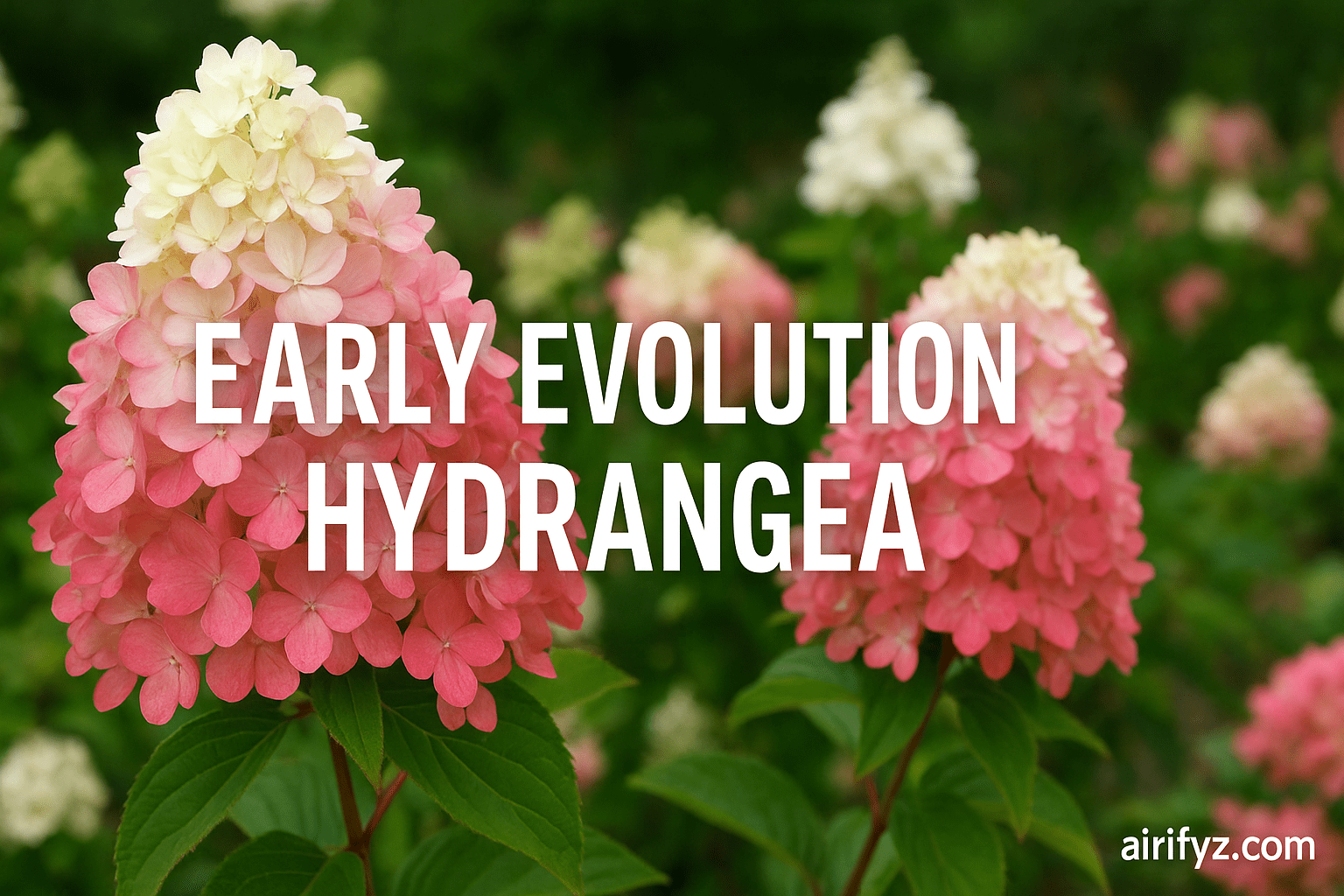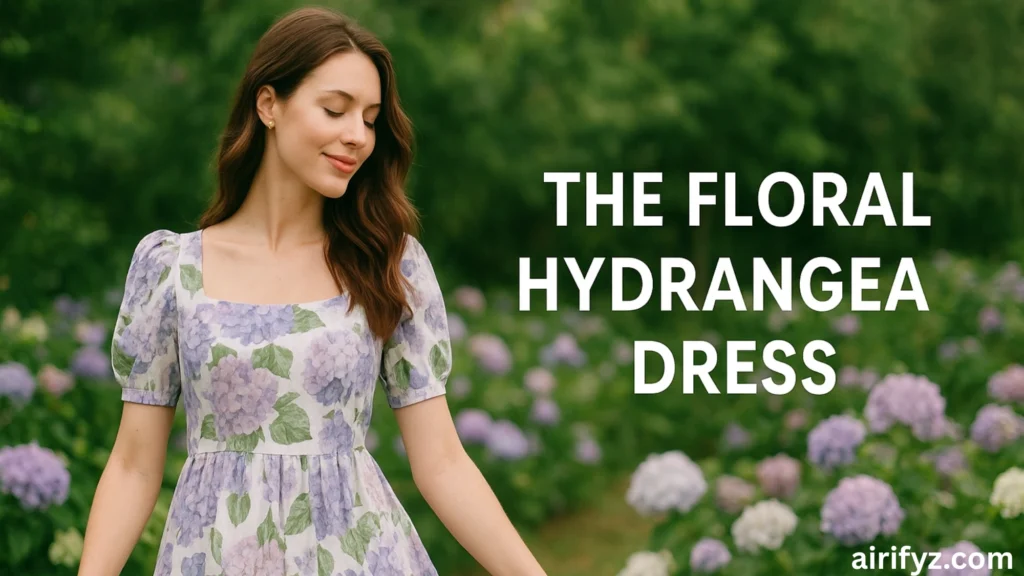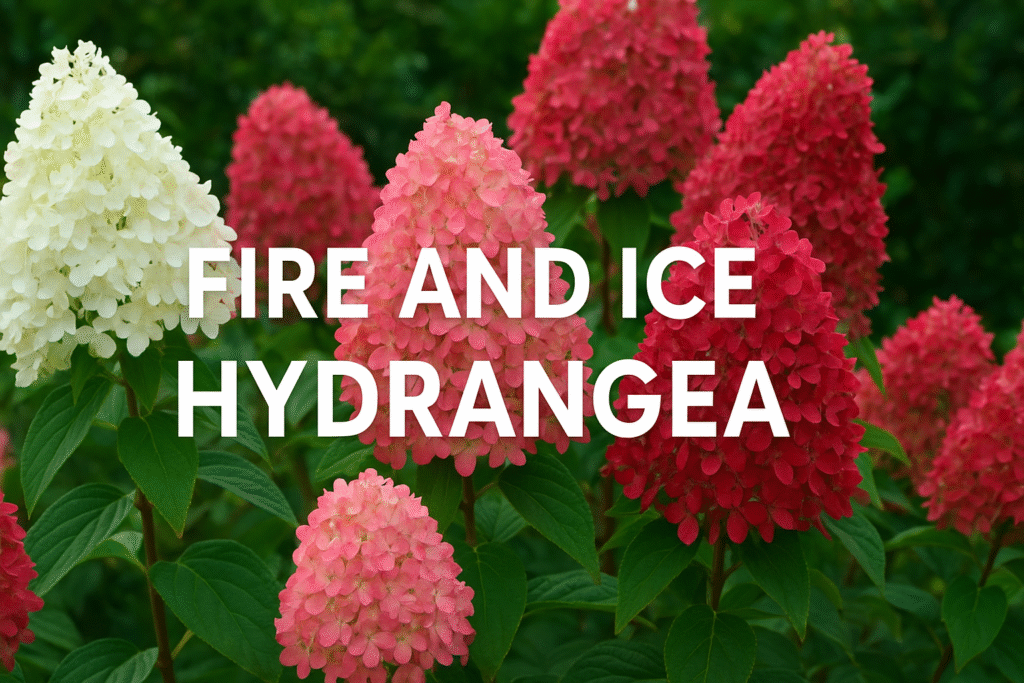INTRODUCTION:
When it comes to garden trends, few blooms are sparking as much buzz in 2025 as the Early Evolution Hydrangea. This compact, color-shifting panicle hydrangea is rewriting the rules for both beginner and expert gardeners alike. But what exactly makes this plant a game changer this year? Why are designers, landscapers, and home gardeners scrambling to plant it front and center?
In this post, we’ll explore the shocking design trends, practical advantages, and future projections that are catapulting the Early Evolution Hydrangea into the gardening spotlight.
🌸 What Is the Early Evolution Hydrangea?
Before diving into the latest trends, let’s define our star plant. The Early Evolution Hydrangea (Hydrangea paniculata ‘AJ14’, PP30,983) is a dwarf panicle variety that blooms earlier than most hydrangeas. With an upright shape, short height (~2.5 ft tall), and dramatic color progression—from cream to blush pink to deep rose—it adds architectural flair without overwhelming smaller garden beds or patio containers.
Unlike many traditional varieties, this hydrangea is low maintenance, compact, and wildly versatile, which explains its recent explosion in popularity.

📈 Trend #1: Early Color Shifts Are Driving Designers Wild
One of the most shocking Early Evolution Hydrangea trends in 2025 is how color is now being used as a seasonal design tool. Landscape artists and florists are using its rapid color evolution to create dynamic palettes that change from spring through fall.
Expert Quote:
“Designers love this variety because it offers three shades in one plant across the season,” says Lisa Grant, a garden stylist featured in Garden Design Weekly. “You plant once and watch your border evolve naturally.”
This trend is particularly popular in modern cottage gardens, where planners mix it with Russian sage, coneflowers, and ornamental grasses for a layered, ever-changing effect.
🪴 Trend #2: Potted and Patio Gardens Are Going Micro
As urban gardening grows, so does the need for compact, statement-making plants. The Early Evolution Hydrangea has become a poster child for patio landscaping in small spaces.
In one Toronto case study, designers lined a fourth-floor condo balcony with six dwarf hydrangeas in charcoal pots—creating privacy, beauty, and seasonal interest without crowding the space.
The trend has taken off on Instagram and Pinterest, with hashtags like #microhydrangeagarden gaining momentum. Expect this to continue through 2025 and beyond as more homeowners embrace container culture.
🌱 Trend #3: Early Evolution Hydrangeas Are Replacing Annuals
Here’s a surprising twist: many gardeners are ditching annual bedding plants for long-term options like the Early Evolution Hydrangea. Why? Because these hydrangeas bloom early and persist, giving instant impact with long-term value.
This trend aligns with eco-conscious gardening. Instead of constantly replacing short-lived flowers, people are investing in sustainable perennials that offer high aesthetic returns.
Pro Tip: Plant them with compost-rich soil and mulch to retain moisture—no need for frequent replanting or heavy watering.
🔄 Trend #4: Dynamic Pairings with Evergreens
Designers are increasingly pairing Early Evolution Hydrangeas with evergreen shrubs, creating year-round structure and contrast.
“There’s nothing more elegant than the soft pinks of hydrangea blooms popping against deep green boxwoods,” shares Juliette Lin, a New York landscape architect.
In 2025, expect to see this combo used along walkways, garden entry points, and minimalist outdoor designs where contrast and form are key.
🧬 Trend #5: Breeders Are Experimenting with Color Intensification
Behind the scenes, plant breeders are working on intensifying the pigment transition in Early Evolution Hydrangeas. Hybrid trials in Oregon and the Netherlands have shown promising results—some cultivars exhibit deeper reds and longer-lasting pinks.
Though these aren’t yet commercially released, 2025 will be a year of anticipation, especially among plant collectors and specialty nurseries. Keep your eyes on botanical trade shows for pre-release varieties.
🌼 Why These Trends Matter
All these trends point to one reality: the Early Evolution Hydrangea is not just a pretty flower—it’s becoming a foundational plant in 2025 landscape planning. Whether you’re working with a small balcony or a sweeping garden, this plant offers a low-maintenance, high-impact solution with serious design potential.
🧠 Real-Life Example: From Blah to Blooming
In Dubai, a homeowner replaced her thirsty, sunburnt impatiens with a trio of Early Evolution Hydrangeas in tall white planters. The result?
-
Lower water bills
-
Fewer replacements
-
A sleek, modern garden transformation
“People think hydrangeas are hard—this variety proves them wrong,” she said.
🧐 Counterpoints & Cautions
No plant is perfect. Here’s what to consider:
-
Heat Sensitivity: In extremely hot climates, flower color may fade more quickly without some afternoon shade.
-
Soil pH Control: Unlike bigleaf hydrangeas, the color of the Early Evolution is not pH dependent—so don’t expect the blue/pink shift from soil tweaks.
Still, for most gardeners, these issues are easily managed or irrelevant.
You can also read about: 👉 Shocking Secrets About Hydrangea Quercifolia Munchkin
🌟 Final Thoughts: The Future of Hydrangea Design Starts Here
The Early Evolution Hydrangea is a modern gardener’s dream. With compact structure, seasonal color shifts, and incredible versatility, it’s no wonder this plant is at the center of so many shocking trends in 2025.
Whether you’re revamping your balcony, redesigning borders, or just want a no-fuss beauty with big rewards, this hydrangea offers something fresh, functional, and fabulous.
🙋♀️ Frequently Asked Questions
1. What makes Early Evolution Hydrangea different from other hydrangeas?
Its compact size, early bloom time, and multi-color seasonal evolution set it apart from most varieties.
2. Can Early Evolution Hydrangeas grow in pots or containers?
Absolutely. They’re ideal for container gardening thanks to their dwarf size and upright shape.
3. How tall does an Early Evolution Hydrangea get?
It typically grows to about 2.5 to 3 feet tall and wide—perfect for small gardens or patios.
4. Do Early Evolution Hydrangeas need full sun or partial shade?
They thrive in full sun to partial shade, though some shade in the afternoon helps in hot climates.
5. When should I prune my Early Evolution Hydrangea?
Prune in late winter or early spring, as it blooms on new wood like most panicle hydrangeas.



